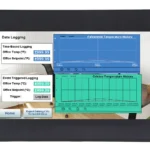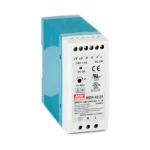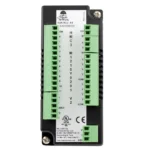Your cart is currently empty!

HMC2101A-M
- Support for up to 5 I/O Expansion Module
- IEC 61131-3 Programming Logic
- High-Speed Counters and PWM I/O Modules
- Class I, Division 2 Rated
- Send files via FTP
- Web Server
10.1″ HMI + PLC, Expandable, 1 Ethernet Port, 1 USB Port, 2 Serial Port, Supports 5 I/O Module
HMC2101A-M
HMC4101A-M replaces HMC2101A-M
Review this product
Share your thoughts with other customers about this product
HMC4000 models are the recommended upgrade option, however, you will need to re-create your project (screens and programming logic) in MAPware-7000 for
this new unit, there is no automatic conversion since it has been built on a new hardware platform.
How do I find the IP address on my HMI+PLC (HMC)?
The maintenance mode that displays the ethernet parameters can be entered by holding the lower right corner of the display while the unit is powered on.
By default, the IP address should be 192.168.0.254 or 192.168.5.81
Do the Maple Systems HMI+PLCs (HMC) support High-Speed Counters (HSC)?
Yes. Our HMI+PLCs (HMC) support High-Speed Counters in MAPware-7000. See the specific Series IO Module guide for more information on which IO modules support High-Speed Counters (HSC) and what registers are used for configuration. Most supported IO modules offer 2 or 4 high speed inputs. Both quadrature and standard HSCs are supported. When using HSCs, different product lines have different maximum frequencies ranging from 10 kHz to 200 kHz.Do the Maple Systems HMI+PLCs (HMC) support Pulse Width Modulation (PWM)?
Yes. Our HMI+PLCs (HMC) support Pulse Width Modulation in MAPware-7000. See the specific Series IO Module guide for more information specifics on which IO modules support Pulse Width Modulation (PWM) and what registers are used for configuration. Four modes of PWM are supported for most IO modules; Normal, Clockwise/Counter-Clockwise (CW/CCW), Pulse/Direction, and Trapezoidal (Fixed Pulse). When using PWM outputs, different product lines have different maximum frequencies ranging from 1 kHz to 200 kHz. Tech Note 7009, “Pulse Width Modulation”, describes each of the four types of PWM output, and then lists which registers to configure, how to configure those registers, and the minimum and maximum ranges of each register. Review the IO module specification sheets to ensure PWM is available.I'm having trouble downloading to my HMI+PLC (HMC) from a USB Flash Drive.
Tech Note 7012, “Download a Project to an HMC from a USB Flash Drive,” provides step-by-step instructions.
I'm having trouble downloading to or configuring my HMI+PLC (HMC) using a USB cable – Download Issue/Error/Problem
If you experience difficulty downloading to an HMI+PLC (HMC) from MAPware-7000 with a Windows® 10 operating system, you may need to re-install the MAPware-7000 USB Drivers. The MAPware-7000 USB drivers are located in the folder: C:MapleSystemsMAPware7000USB Drivers. Refer to Tech Note 7017, “Reinstall MAPware-7000 USB Drivers” for full instructions on how to delete and reinstall the USB driver. Also, make sure you are using a USB 2.0 port on your PC to download to the HMI+PLC. USB 3.0 is not supported.Trying to download but MAPware7000 says "Device not responding"
If you are attempting to download to an HMI/PLC and the download manager displays “”Device not responding””, check that the physical connection between the HMC and PC is secure.If using Ethernet, make sure the PC can connect to the HMC by “PINGing” the IP address of the HMC.
If using USB, confirm that “HMI USB Device” shows up in Windows Device Manager. You may want to refer to Tech Note 7017 AFTER considering the next step.
On the HMC screen, delete the firmware by holding the top left corner of the screen while powering on. Then delete the application by holding the top right corner of the screen while powering on. Now try downloading the project to the screen again.
Software Downloads & Upgrades
Manuals & Guides
- HMC Series Installation Guide
- MAPware-7000 Programming Manual
- MAPware-7000 Ladder Logic Guide
- Mapware-7000 Getting Started Guide
- HMC3000 I/O Module Guide
- HMC7000 I/O Module Guide
- MAPware-7000 IEC61131 Programming Guide
Videos
- Part 1: Introduction and Installation
- Part 2: Creating a Native Ladder Project
- Part 3: Adding and Initializing Tags
- Part 4: Adding Logic
- Part 5: Creating an HMI Screen
- Part 6: Duplicationg an HMI Screen
- Part 7: Downloading and Testing the Project
- Part 8: Creating an IEC Project
- Part 9: Creating a UDFB
- Part 10: Adding a Structure Text UDFB
- Part 11: Adding Power Up and Main Routine Logic
- Part 12: Creating Screen Objects
- Part 13: Downloading the Project and Online Monitoring
Sample Projects
-
 10.1″ Advanced HMI + PLC$865.00
10.1″ Advanced HMI + PLC$865.00
-
 Power Supply, Single Output, DIN Rail Mountable. Input: 100-240VAC, 1.1A/Output: 24VDC, 1.7A.$40.00
Power Supply, Single Output, DIN Rail Mountable. Input: 100-240VAC, 1.1A/Output: 24VDC, 1.7A.$40.00 -
 I/O Module | 12 Bi-Directional Digital Inputs, 10 Digital Outputs, 2 Analog Inputs, 1 Analog Output$180.00
I/O Module | 12 Bi-Directional Digital Inputs, 10 Digital Outputs, 2 Analog Inputs, 1 Analog Output$180.00
